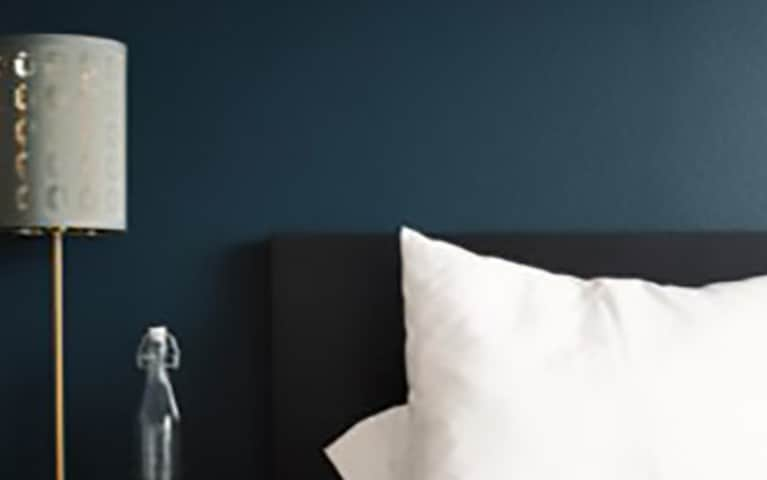When it comes to designing the lighting for a bedroom, the experts have some rules. Choosing bedroom lighting is not always simple.
First, consider dimmers.
“Everything needs to be on dimmers so you have full control over the mood of the room," says Clifford Starr, chief lighting designer consultant for Lighting by Gregory.
Secondly, “I always tell my clients that bedrooms need layers of lighting," he says, referring to the number of separate lights in the room. Bedrooms need two to three layers.
“You need a big light to see everything that might be going on in the room, such as furniture, or if you're going to walk in to take something out of a drawer," he says. "And you also need a bedside light or two for reading or watching TV."
One big no-no: “A light in the middle of the room," he says. “It makes the eye go to the middle of the room instead of farther to the wall." In small spaces, with 8- to 9-foot ceilings, a light in the middle of the room makes the room look smaller. Perhaps in a larger space with 11-foot ceilings, he'd put a fixture in the middle of the room, but only as a decoration.
“A light in the center of the room is boring," he says. "Light what you want to see."
Does one person read and the other goes straight to sleep in the bedroom? If so, the reader will need a focused light. Starr prefers recessed lighting over lamps, especially if space is an issue.
Bulbs Matter
Common incandescent bulbs are being phased out. Today people are buying LEDs, which stands for light-emitting diode. LEDs are semiconductor devices that emit visible light when an electric current passes through them. They're more energy efficient — they can last 10 years when used three hours a day, compared with a year on incandescent bulbs.
"LEDs are so much better than halogens," Starr says. For a while many people switched from regular bulbs to halogens, but now 90 percent of their business involves LEDs. This can confuse people, because the bulbs come in different "temperatures" — from red to orange, yellow, white and blue, or from "warm" to "cold."
"People used to know if they were buying a 'warm' bulb," Starr says. He recommends 2700-3000 Kelvins for a warm glow in the bedroom.
Natural Light
When designing a bedroom, it's also important to consider the natural light, which some believe is the key to our sleep and general health.
"Being exposed to natural light and following Nature's rhythms reinforces and strengthens the entire body especially the immune system," write Mark Karlen and James Benya, in the book Lighting Design Basics.
"With the invention of electricity, humans began a series of changes in lifestyle that are now seen as interrupting nature's rhythms," they write, about the practice of "daylighting" — using windows, skylights and other forms of openings to bring light into rooms.
Aside from layers of lighting, it's important to have curtains to block out the light when you're sleeping, but that can admit light in the daytime.
The most important thing about bedroom lighting, natural or electronic, isn't the specifics.
"They should be conducive to sleep," the authors write.
Want even better sleep? Sleepers who routinely use their Sleep Number smart bed features and SleepIQ® technology get almost 100 hours more proven quality sleep per year.*
Like diet and exercise, quality sleep is essential for optimal wellbeing and performance. Because everyone's sleep needs are different, Sleep Number® smart beds sense your movements and automatically adjust firmness, comfort and support to keep you both sleeping comfortably. Find your Sleep Number® setting for your best possible night's sleep.
*Based on internal analysis of sleep sessions assessing sleepers who use multiple features of Sleep Number® products. Claim based on sleepers achieving over 15 more minutes of restful sleep per sleep sessions.
